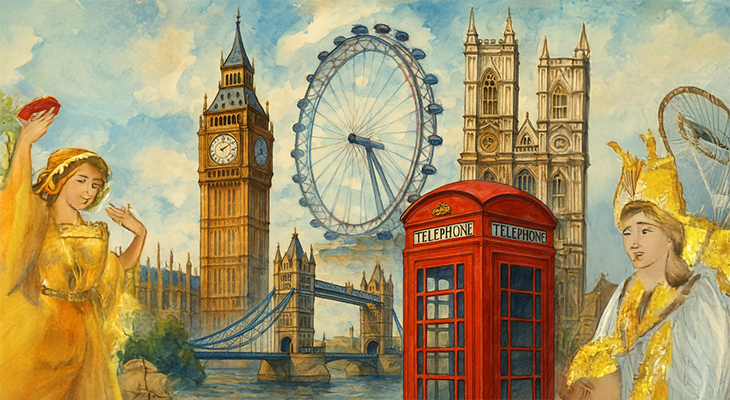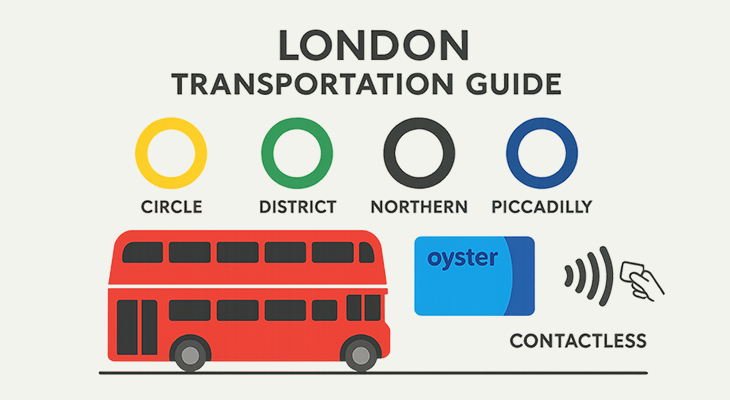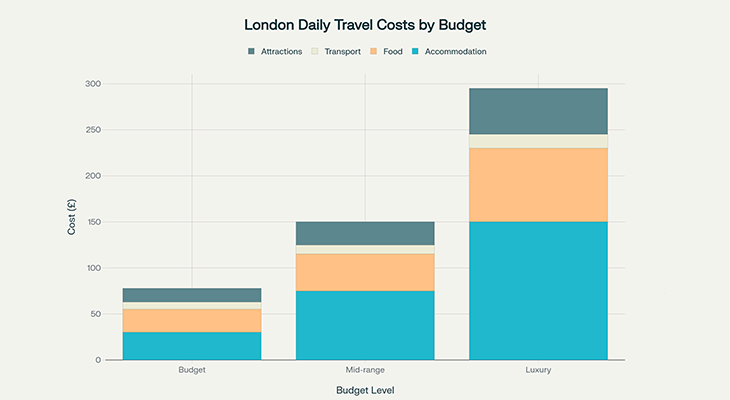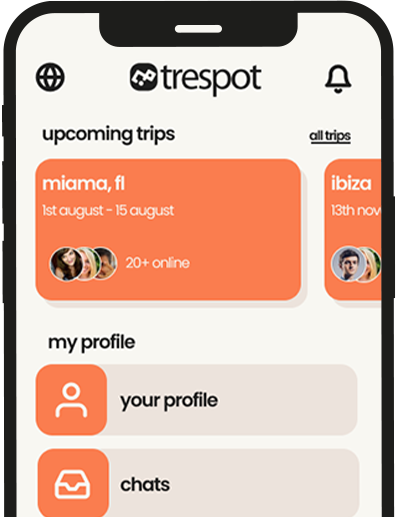
London stands as one of the world's most captivating capitals, where centuries of history blend seamlessly with cutting-edge modernity. Whether you're drawn by the royal pageantry of Buckingham Palace, the theatrical magic of the West End, or the vibrant diversity of its neighborhoods, London offers an unforgettable experience for every type of traveler.
However, navigating this sprawling metropolis can feel overwhelming without proper preparation. From understanding the complex transport system to budgeting effectively and avoiding common tourist pitfalls, successful London travel requires insider knowledge that goes beyond typical guidebooks.
This comprehensive guide provides essential london travel tips that will transform your visit from good to extraordinary. You'll discover how to maximize your time and budget, navigate like a local, experience authentic British culture, and avoid the mistakes that trip up most first-time visitors. Whether you're planning a weekend getaway or an extended exploration, these practical insights will help you unlock the best of what London has to offer while saving time, money, and unnecessary stress.
Table of Contents
- Planning Your London Trip: When to Visit and How Long to Stay
- Getting Around London: Transportation Made Simple
- London Accommodation Guide: Where to Stay
- Must-See London Attractions and Activities
- London Food Scene: What and Where to Eat
- London Shopping Areas and Districts
- Budgeting for Your London Trip
- London Safety and Cultural Tips
- Common Tourist Mistakes to Avoid
- Quick Takeaways
- Conclusion
- Frequently Asked Questions
Planning Your London Trip: When to Visit and How Long to Stay
Best Time to Visit London
London's temperate maritime climate means the city welcomes visitors year-round, but timing your trip strategically can significantly enhance your experience. The optimal time for first time visiting London falls during late spring (April-May) and early autumn (September-October), when you'll enjoy mild temperatures ranging from 10-20°C (50-68°F) and fewer crowds compared to peak summer months.
Summer (June-August) brings London's warmest weather with temperatures averaging 18-24°C, but also attracts the highest number of tourists and premium pricing. If you don't mind occasional showers and want to experience London's festive atmosphere, winter offers unique charm with Christmas markets, holiday decorations, and significantly lower accommodation costs.
Weather considerations for your London travel guide: October typically sees the most rainfall with 21 days of precipitation on average, while March and April tend to be drier. Pack layers regardless of season, as London weather can be unpredictable, and always carry a compact umbrella.
How Long to Stay in London
For first-time visitors wanting to see major attractions without feeling rushed, plan for 4-6 days minimum. This allows time to explore central London's iconic landmarks, visit 2-3 world-class museums, catch a West End show, and experience different neighborhoods. Budget-conscious travelers can see highlights in 3 days, while those seeking deeper cultural immersion should consider 7-10 days to include day trips to Windsor, Greenwich, or Oxford.
London's sheer size often surprises visitors – many attractions that appear close on maps require 45-60 minutes walking time between them. Factor this into your daily planning to avoid exhaustion and allow for spontaneous discoveries that make London special.
Getting Around London: Transportation Made Simple
The London Underground (Tube) System
London's Underground network, affectionately known as "the Tube," remains the fastest and most efficient way to navigate central London. With 272 stations across 11 lines, the system connects virtually every major attraction, shopping district, and neighborhood you'll want to explore.
Essential tube etiquette for London transportation guide: Stand on the right side of escalators, allowing people to walk up the left side – violating this unwritten rule will earn you disapproving looks from locals. During rush hours (7:30-9:30 AM and 5:00-7:00 PM), trains become extremely crowded, so remove backpacks and move to the center of carriages to allow others to board.
The Tube operates from approximately 5:00 AM to midnight Sunday through Thursday, with extended Night Tube service on weekends for Central, Northern, Piccadilly, Victoria, and Jubilee lines. Download the official TfL app or Citymapper for real-time updates on service changes and route planning.

London Underground Map - Your Essential Navigation Tool
Buses, Taxis, and Alternative Transport
London's iconic red double-decker buses offer scenic routes and cost just £1.75 per journey with free transfers within one hour. Bus route 9 provides an excellent sightseeing tour passing major landmarks, while route 15 connects Tower Hill to Trafalgar Square via St. Paul's Cathedral.
Black cabs versus ride-sharing: Traditional black cabs can be hailed from the street and drivers possess "The Knowledge" – an encyclopedic understanding of London's streets. However, they're significantly more expensive than Uber or bus alternatives. For airport transfers, pre-book through apps like Gett for black cabs or use Uber for more affordable options.
Walking often proves faster than public transport for short distances, especially in central London where many attractions cluster within 10-15 minutes of each other. The South Bank walk from Westminster to Tower Bridge offers spectacular views and connects multiple attractions without requiring transport.
Oyster Cards vs. Contactless Payment
Budget travel London tip: Skip paper tickets entirely – they cost significantly more than electronic payment methods. Daily caps limit your spending to £8.50 for zones 1-2, regardless of how many journeys you make.
Contactless bank cards (including Apple Pay, Google Pay) offer the same pricing as Oyster cards without requiring a separate purchase. Simply tap in and out using the same card or device for each journey. The £7 Oyster card fee becomes worthwhile only for visitors staying longer than a week or those wanting a London souvenir.
Pro tip for London travel budget: Use the Hopper fare on buses – after your first bus journey, unlimited bus and tram travel costs nothing extra for one hour, perfect for exploring different neighborhoods affordably.
London Accommodation Guide: Where to Stay
Best Neighborhoods for First-Time Visitors
Central London locations offer walking access to major attractions but command premium prices. Covent Garden provides theatrical atmosphere and shopping, while South Kensington grants easy access to world-class museums and Hyde Park. Bloomsbury offers a more residential feel with the British Museum on your doorstep and excellent transport connections.
King's Cross and Fitzrovia have transformed into trendy neighborhoods with boutique hotels, artisanal coffee shops, and easy access to both central attractions and transport hubs. These areas often provide better value than ultra-central locations while maintaining convenience.
For budget accommodation tips London: consider Earl's Court, Bayswater, or Paddington areas, which offer decent mid-range options with tube connections to central London. Student accommodations in areas like Bethnal Green or Mile End provide budget alternatives with excellent transport links during university holidays.
Budget-Friendly Accommodation Options
Hostels in London range from £20-35 per night for dormitory beds in central locations. YHA London Central, Generator London, and Wombats City Hostel offer clean, safe accommodation with social atmospheres perfect for meeting fellow travelers.
Budget hotels like Travelodge, Premier Inn, and Point A Hotels provide private rooms from £60-100 per night. These chains offer consistent quality, central locations, and often include breakfast deals that save money on daily food costs.
Unique accommodation experiences: Consider staying in a traditional London pub with rooms above, offering authentic local flavor and competitive pricing. University accommodation during summer holidays provides excellent value in prestigious areas like Bloomsbury or South Kensington.
Must-See London Attractions and Activities
Free Museums and Galleries
London's commitment to accessible culture shines through its 15+ major free museums, making it possible to experience world-class art and history without spending a penny. The British Museum houses treasures including the Rosetta Stone and Parthenon sculptures, while Tate Modern offers contemporary masterpieces in a converted power station.
Strategic museum visiting: Many museums open at 10 AM but get crowded by noon. Visit popular exhibitions like the Natural History Museum's dinosaur gallery first thing in the morning, then explore quieter sections during peak afternoon hours. The Victoria & Albert Museum's labyrinthine layout rewards multiple visits, focusing on different themes each time.
Hidden gems among free attractions: The Wallace Collection in Marylebone offers exquisite decorative arts in an intimate setting, while the Sir John Soane's Museum provides a fascinating glimpse into Victorian collecting obsessions. The Guildhall Art Gallery's Roman amphitheater ruins surprise visitors beneath the City of London.

British Museum - Free World-Class Culture
Iconic Landmarks and Paid Attractions
Westminster area concentrates London's most recognizable landmarks within walking distance. Westminster Abbey (£30+ entry) offers 1,000 years of royal history, while the Houses of Parliament tours (when available) provide insights into British democracy. Big Ben's renovation continues until 2028, but the clock face remains partially visible.
Tower of London (£30+ entry) deserves half a day to explore its 900-year history as fortress, palace, and prison. Arrive early to see the Crown Jewels before crowds build, then join a Yeoman Warder (Beefeater) tour for entertaining historical anecdotes.
London Eye (£32+ entry) provides spectacular 30-minute rotations with 360-degree city views. Book online for discounts and skip regular queues, or consider sunset slots for magical lighting. The nearby SEA LIFE London Aquarium and London Dungeon offer package deals for families.
West End Shows and Entertainment
London's West End shows rival Broadway for quality and spectacle, with over 40 theaters offering everything from long-running classics to cutting-edge new productions. Book popular shows like The Lion King, Hamilton, and Wicked weeks in advance, especially during school holidays and summer months.
Money-saving theater tips: Visit the tkts booth in Leicester Square for same-day half-price tickets to available shows. Many theaters offer £20-30 tickets for students and under-30s through special schemes. Some productions provide standing room tickets for £5-15 on the day of performance.
Beyond the West End: Explore innovative theater at venues like the Old Vic, Donmar Warehouse, and Almeida Theatre for more intimate experiences. The Southbank Centre offers free foyer performances and events, while summer brings outdoor theater to Regent's Park and other green spaces.
London Food Scene: What and Where to Eat
Traditional British Cuisine
Authentic British dining experiences extend far beyond stereotypes of bland food. Start your day with a proper full English breakfast at traditional "greasy spoon" cafes – expect bacon, eggs, sausages, baked beans, black pudding, grilled tomatoes, and toast for £6-12.
Sunday roast represents British dining at its finest – slow-roasted beef, lamb, or chicken served with Yorkshire pudding, roast potatoes, seasonal vegetables, and rich gravy. Many pubs serve excellent Sunday roasts from £12-18, creating convivial atmospheres perfect for experiencing local culture.
Essential British dishes to try: Fish and chips remains the national dish, best enjoyed from proper fish shops rather than tourist-oriented restaurants. Bangers and mash (sausages with mashed potatoes and onion gravy) offers comfort food at its best, while steak and kidney pie showcases traditional British pastry skills.
International Food Markets
Borough Market stands as London's premier food destination, operating since the 13th century beneath Victorian railway arches. Sample artisanal cheeses, exotic spices, and gourmet street food from around the world. Arrive early (before 11 AM) to avoid overwhelming crowds and secure the best selection.
Brick Lane in East London offers London's best curry houses, reflecting the area's Bengali heritage. The concentration of authentic Indian and Bangladeshi restaurants creates friendly competition that keeps quality high and prices reasonable. Try chicken tikka masala – a dish actually invented in Britain.
Camden Market combines alternative culture with international street food, while Seven Dials Market in Covent Garden offers upscale food hall dining in a converted Victorian warehouse. These venues perfect for trying multiple cuisines in single visits.
Dining Etiquette and Tipping
London tipping culture differs significantly from American practices. Restaurants often add 12.5% service charges automatically – check your bill before adding extra gratuities. When service charges aren't included, 10-15% tips are appreciated but not mandatory.
Pub etiquette essentials: Order drinks at the bar rather than waiting for table service. If drinking with locals, participate in "buying rounds" – each person takes turns purchasing drinks for the entire group. It's considered rude to leave before buying your round.
Tea time traditions: Afternoon tea at hotels like The Ritz or Fortnum & Mason offers quintessential British elegance, but costs £40-80 per person. More affordable options exist at department store cafes or traditional tea rooms throughout London.
London Shopping Areas and Districts
Oxford Street and Regent Street
Oxford Street stretches 1.5 miles from Marble Arch to Tottenham Court Road, hosting over 300 shops including flagship stores for major international brands. Selfridges remains the crown jewel, offering luxury shopping and its own cinema for when retail therapy becomes overwhelming.
Strategic Oxford Street shopping: Visit weekday mornings to avoid crushing crowds. Flagship stores like Primark, Zara, and H&M offer extensive selections, while side streets like St. Christopher's Place provide respite with boutique shops and outdoor dining.
Regent Street curves elegantly from Oxford Circus to Piccadilly Circus, featuring upscale retailers like Liberty department store with its distinctive Tudor Revival facade. The street's architectural uniformity creates Instagram-worthy backdrops for shopping photos.
Insider shopping tip: Many Oxford Street stores offer tax-free shopping for non-EU visitors, providing immediate VAT refunds of 20% on purchases over £30. Carry your passport and ask for VAT forms at checkout.
Covent Garden and Camden Market
Covent Garden combines shopping with entertainment in beautifully restored Victorian market buildings. Street performers entertain crowds while boutiques like Charlotte Tilbury, Mulberry, and Apple provide premium retail experiences. The covered Apple Market offers handmade crafts and antiques.
Neal Street and Seven Dials surrounding Covent Garden house independent designers, vintage clothing stores, and specialist shops selling everything from handmade jewelry to rare teas. These pedestrian-friendly streets reward leisurely exploration and serendipitous discoveries.
Camden Market attracts alternative culture enthusiasts with vintage clothing, band merchandise, and eclectic crafts spread across multiple connected markets. The area's punk rock heritage influences many vendors, making it perfect for unique souvenirs unavailable elsewhere.
Budgeting for Your London Trip
Daily Cost Breakdown by Budget Level
| Budget Level | Daily Cost | Accommodation | Food | Transport | Attractions |
|---|---|---|---|---|---|
| Budget | £60-95 | £20-35 (hostels) | £20-25 (pubs, markets) | £8 (public transport) | £10-15 (mostly free) |
| Mid-range | £100-150 | £75 (hotels) | £40 (restaurants) | £10 (including some taxis) | £25 (regular entries) |
| Luxury | £200+ | £150+ (premium hotels) | £50-100 (fine dining) | £15+ (private transport) | £50+ (exclusive experiences) |
Money-Saving Tips and Tricks
Free entertainment abounds throughout London beyond museums. Hyde Park's Speaker's Corner offers Sunday morning soapbox oratory, while the South Bank's street performers provide world-class busking. Many churches host free lunchtime concerts, and summer brings outdoor festivals to parks citywide.
Grocery shopping strategy: Major supermarkets like Tesco, Sainsbury's, and M&S Food offer meal deals (sandwich, drink, snack) for £3-4, perfect for picnic lunches in London's numerous parks. Borough Market samples allow free tastings before purchasing premium ingredients.
Transport savings beyond daily caps: Walk between nearby attractions to discover hidden neighborhoods and architectural details. The Thames Path offers scenic walking routes connecting major sites, while Boris Bikes (Santander Cycles) cost only £1.65 for 30 minutes of cycling.
London Safety and Cultural Tips
Staying Safe as a Tourist
London ranks among Europe's safer capital cities, but tourist safety awareness prevents most problems. Petty crime like pickpocketing concentrates in crowded areas including Oxford Street, Leicester Square, and busy Tube stations, particularly during rush hours.
Mobile phone security requires special attention – nearly 200 phones are stolen daily in London, often by thieves on bikes or e-scooters near busy roads. Keep devices secure when checking maps, avoid using phones near road edges, and consider phone insurance for expensive models.
Emergency procedures: Call 999 or 112 for police, ambulance, or fire services. Report non-urgent crimes on 101. Download the citizenAID app for guidance during rare emergency situations. Tourist police operate in major areas and speak multiple languages.
Practical safety measures: Use hotel safes for valuables, keep passport copies separate from originals, and maintain awareness in crowded spaces. Licensed black cabs and pre-booked minicabs offer safest late-night transport options.
British Etiquette and Cultural Norms
Queuing culture dominates British social behavior – always join the back of lines and wait patiently. Cutting queues ranks among the most serious social violations, guaranteed to provoke vocal disapproval from otherwise polite Londoners.
Conversation guidelines: "Please," "thank you," and "sorry" appear constantly in British speech, even when unnecessary by international standards. Weather provides universal conversation starters, while avoiding controversial topics initially helps social interactions flow smoothly.
Escalator etiquette on the Tube follows strict protocols: stand right, walk left, and never block passages during rush hours. Violating these rules marks you immediately as a tourist and can cause dangerous congestion in busy stations.
Pub culture includes buying rounds when drinking in groups – failing to reciprocate is considered extremely rude. Order at the bar rather than expecting table service, and remember that many pubs stop serving food by 9 PM despite staying open later for drinks.

Essential London Etiquette for First-Time Visitors
Common Tourist Mistakes to Avoid
Transportation and Navigation Errors
Distance miscalculations represent the most frequent planning error – London's vast size means attractions appearing close on maps often require 45-60 minutes walking. Westminster to Tower Bridge takes over an hour on foot, despite seeming like a short distance on tourist maps.
Paper ticket purchases waste both time and money, as contactless payments cost significantly less and eliminate queuing at ticket machines. Many tourists still buy expensive single journey tickets instead of benefiting from daily price caps available through contactless cards.
Wrong-way traffic dangers cause numerous accidents as visitors from right-hand drive countries instinctively look the wrong direction when crossing streets. "Look Left" and "Look Right" painted reminders appear at many crossings, but distracted tourists still make dangerous assumptions about traffic direction.
Booking and Planning Mistakes
Last-minute attraction bookings often result in disappointment, particularly for popular experiences like Harry Potter Studio Tours, Tower of London, and West End shows. Many attractions now require advance booking even when free, including the British Museum's special exhibitions.
Leicester Square tourist traps lure visitors with overpriced restaurants, tacky souvenir shops, and aggressive street performers. The area offers little authentic London experience despite its central location and constant crowds of tourists.
Overambitious daily itineraries attempting to cover too many attractions lead to exhaustion and superficial experiences. London rewards deeper exploration of fewer areas rather than rushed visits to maximum attractions.
Quick Takeaways
- Plan 4-6 days minimum for first-time London visits to see major attractions without feeling rushed, with April-May and September-October offering optimal weather and fewer crowds
- Use contactless payment for all transport instead of buying expensive paper tickets – daily caps limit spending to £8.50 for central London zones
- Book popular attractions and West End shows in advance to avoid disappointment, especially during summer months and school holidays
- Budget £60-95 daily for budget travel, £100-150 for mid-range comfort, with free museums and parks significantly reducing attraction costs
- Master basic British etiquette including queuing patiently, standing right on escalators, and buying rounds in pubs to enhance local interactions
- Stay aware of pickpockets in tourist areas and avoid using phones near busy roads where bike thieves operate frequently
- Walk between nearby attractions to discover hidden neighborhoods and save money, as many central London sites cluster within 15-20 minutes of each other
Conclusion
London offers an extraordinary blend of historical grandeur, cultural innovation, and modern convenience that creates unforgettable experiences for every type of traveler. By following these essential london travel tips, you'll navigate the city with confidence, maximize your budget, and avoid the common pitfalls that can diminish your visit.
Remember that London rewards curious exploration over rigid itinerary adherence. While planning provides structure, leave room for spontaneous discoveries – whether stumbling upon a hidden pub, catching an impromptu street performance, or finding that perfect vintage shop down an unexpected alley. The city's greatest treasures often reveal themselves to those willing to venture beyond the obvious tourist paths.
Most importantly, embrace the local pace and customs. London's residents appreciate visitors who respect queuing etiquette, navigate transport considerately, and show genuine interest in British culture. Your willingness to engage respectfully with local traditions will open doors to authentic experiences and meaningful connections.
Ready to start planning your London adventure? Begin by booking accommodation in your preferred neighborhood, researching current West End shows, and downloading essential apps like Citymapper and the official TfL app. Join our travel community to share your London discoveries and connect with fellow explorers who can provide real-time tips and recommendations for your upcoming journey.
Frequently Asked Questions
How much money should I budget per day for London?
Budget travelers can explore London on £60-95 per day including accommodation, food, and attractions. Mid-range visitors typically spend £100-150 daily, while luxury travelers budget £200+ for premium experiences. Free museums and parks significantly reduce costs for budget-conscious visitors.
What's the best way to get from London airports to the city center?
From Heathrow, take the Elizabeth line (£12.80) or Heathrow Express (£25) for fastest connections. Gatwick connects via Gatwick Express or Southern trains (£15-20) to Victoria Station. Stansted Express reaches Liverpool Street in one hour (£23), while Luton requires a bus connection (£17 total journey time).
Do I need to book London attractions in advance?
Yes, many popular attractions now require advance booking including Tower of London, London Eye, and Harry Potter Studio Tours. Even free museums often need timed entry slots for special exhibitions. West End shows sell out weeks ahead, especially during summer and school holidays.
Is London safe for solo travelers?
London is generally very safe for solo travelers, ranking among Europe's safest capitals. Exercise normal precautions against pickpockets in tourist areas, avoid using phones near busy roads, and use licensed taxis for late-night transport. Emergency services (999 or 112) provide 24/7 assistance.
What's the difference between Oyster cards and contactless payment?
Both offer identical pricing with £8.50 daily caps for central London zones. Contactless bank cards (including phone payments) work immediately without purchasing a separate £7 Oyster card. Choose Oyster only if staying longer than a week or wanting a London souvenir.
Share Your London Experience!
Have you discovered any hidden gems or money-saving tricks during your London travels? We'd love to hear about your favorite neighborhoods, restaurants, or attractions that didn't make the typical tourist lists!
What surprised you most about London during your visit? Share your story in the comments below and help fellow travelers discover the authentic side of this incredible city. Don't forget to share this guide with friends planning their own London adventures – every traveler deserves insider tips for making the most of their journey!
References
- Visit London - Official Visitor Guide
- Major works and events - Transport for London
- 13 best tips for cheap travel in London
- London - Rick Steves Europe
- Time Out London - Local Events and Attractions


